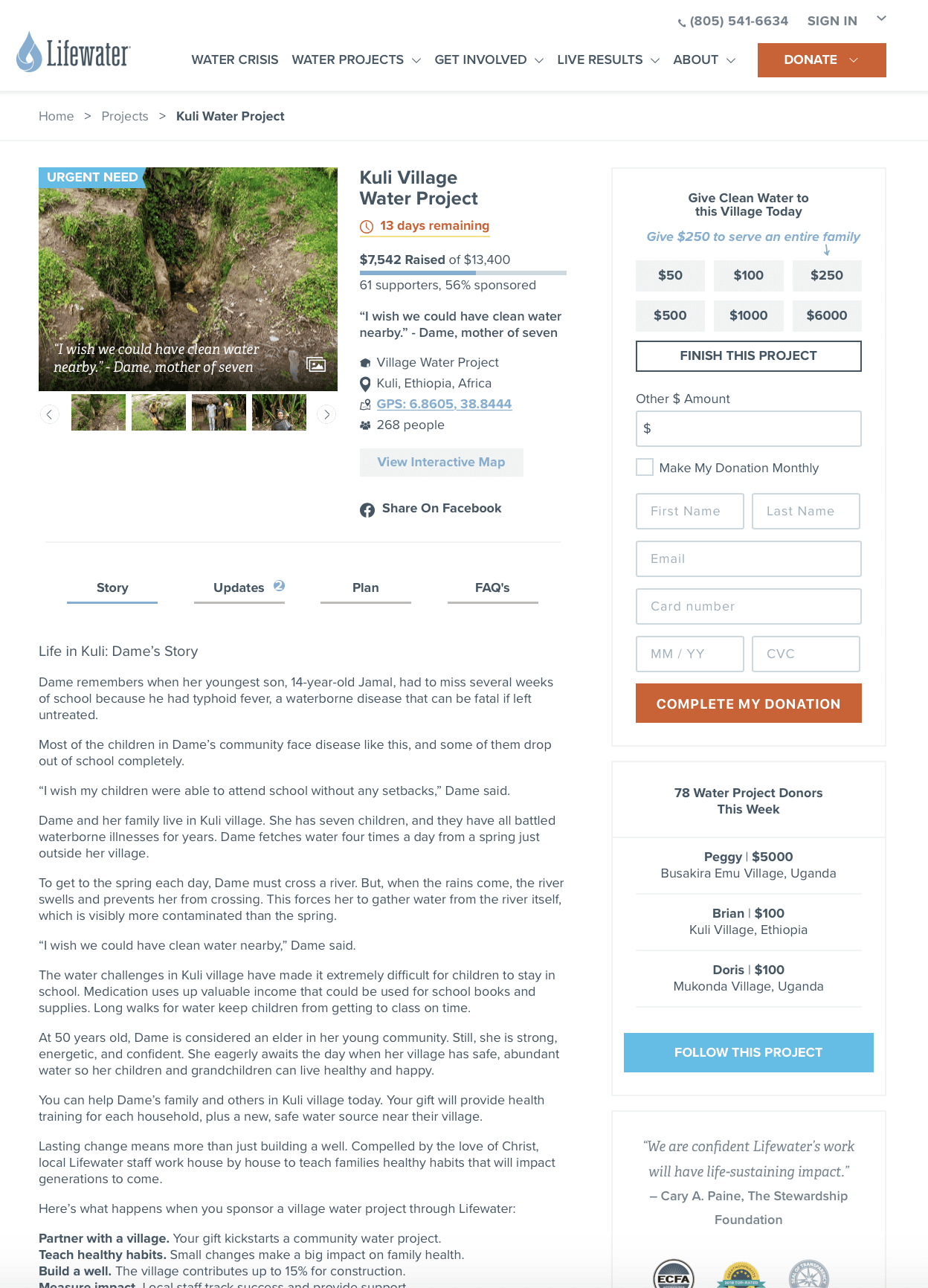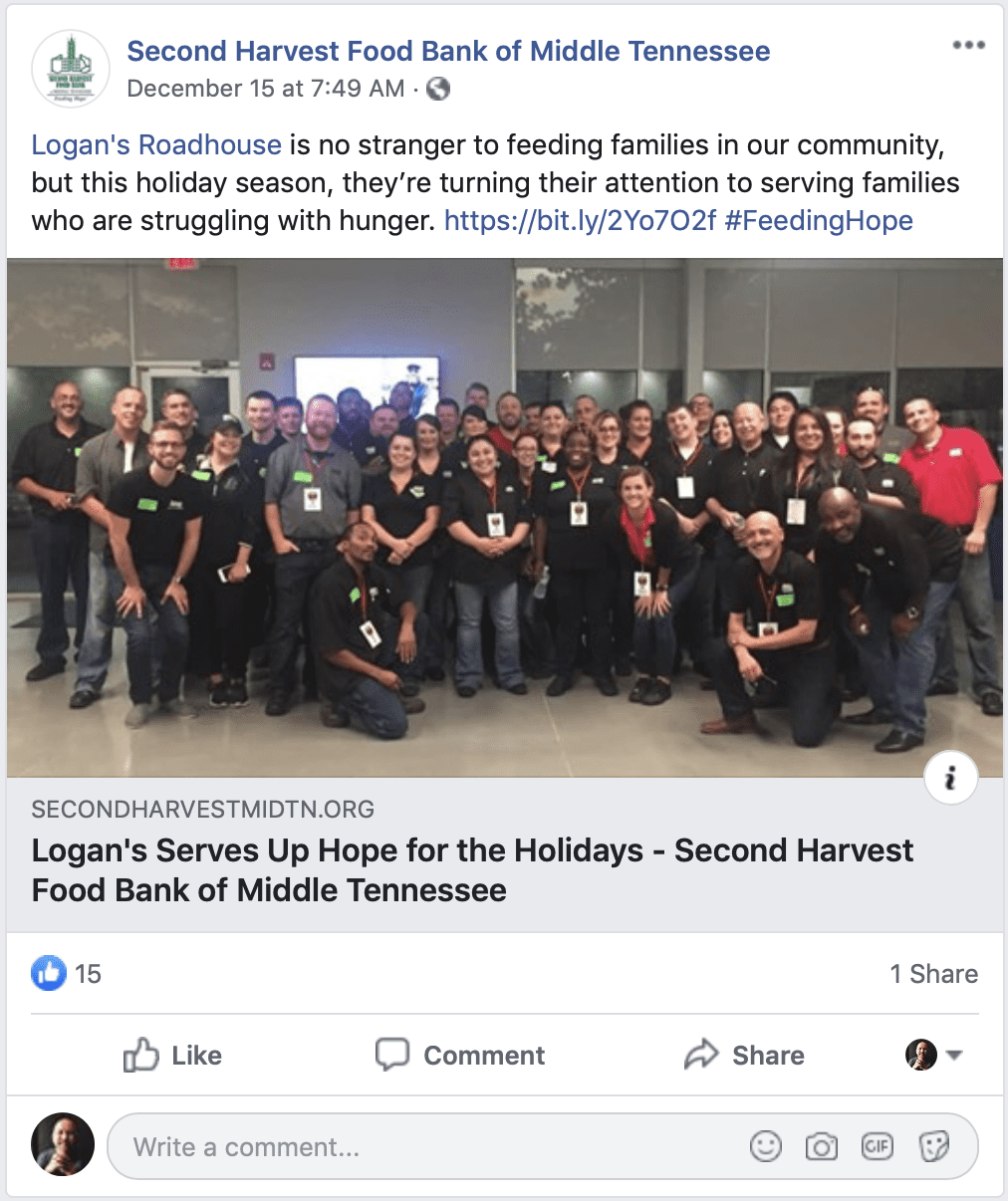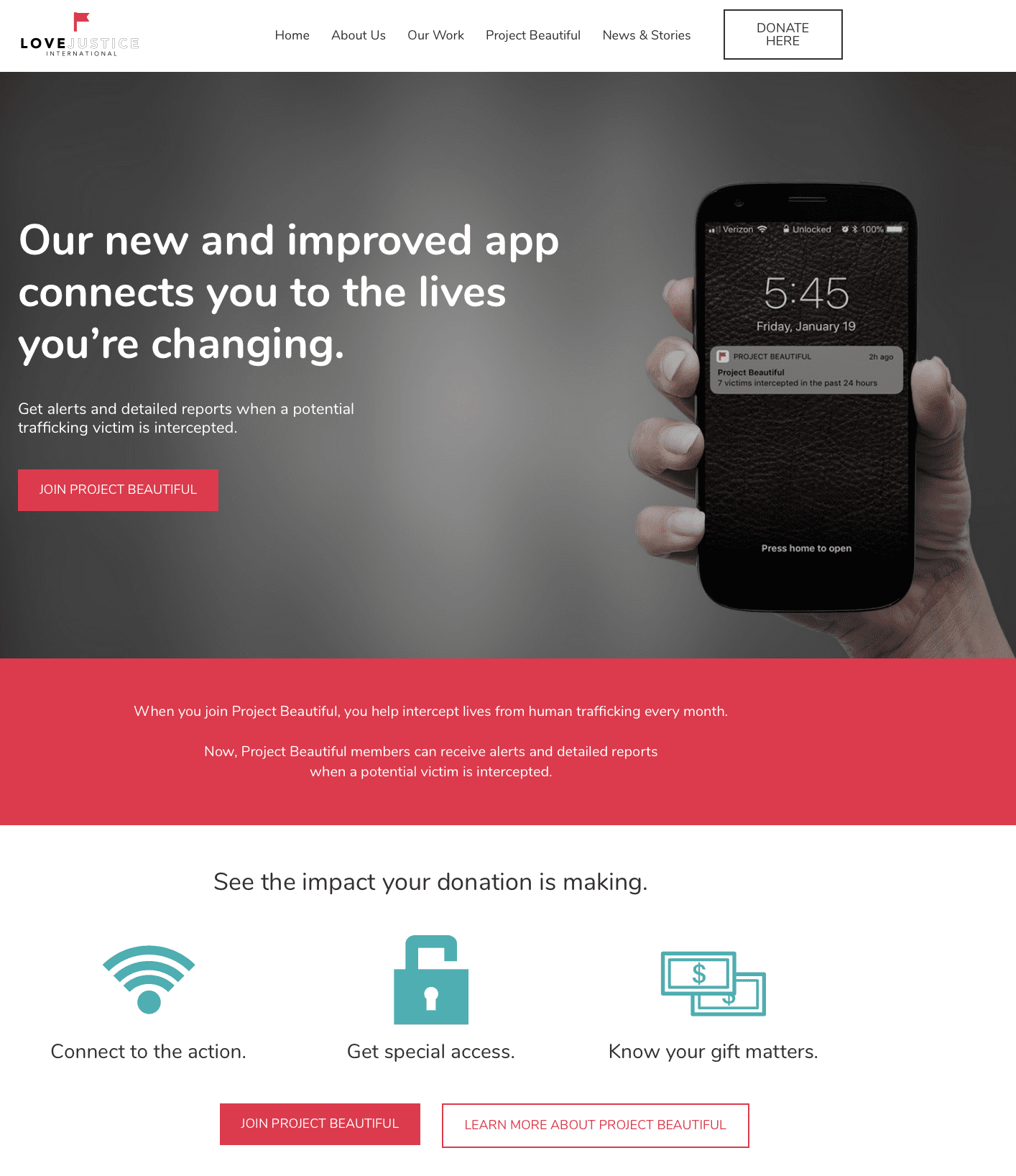Recently, a question was posed to me on LinkedIn asking about which nonprofits are engaging with donors in a way that creates a feeling of “belonging.” We’ve found in surveys that donors frequently talk about a desire to be a part of community. Donors want to be a part of something.
With donors who have capacity, like major or mid-level donors, creating this feeling is easier than mass donors as donors with capacity often have an assigned rep. As your mass donor base grows to 1,000, 10,000, or even 100,000 donors, you won’t have the ability to scale one-on-one interactions. So instead, we need to develop tactics that engage a donor in a way that makes her feel like she belongs and feel connected to the mission. When a donor feels connected, you’ll likely not lose that donor.
1. Lifewater
 The donation page to fund a specific village through Lifewater is built to give you a sense of trust that this organization has other supporters. In fundraising, the endorsements of other donors is crucial to how you engage new donors.
The donation page to fund a specific village through Lifewater is built to give you a sense of trust that this organization has other supporters. In fundraising, the endorsements of other donors is crucial to how you engage new donors.
On the left, you’ll find the story of this specific project. The story itself is personalized to a specific person who will be impacted when you give clean water. We call this the Story of the One and it’s an important part of the donation process. When a donor reads a story of a single beneficiary, it’s easy for that donor to commit in their mind that they can help. When you tell a more fact-based story, such as one discussing that “1,300 families will be helped by this clean water,” it is less impactful than the story of a single person who is impacted.
On the right hand side of the donation page, you see a box that has example donations from other people to clean water projects (this is called social proof). This list refreshes and shows to the donor that other people support Lifewater, so why shouldn’t I?
Below the social proof box is a quote from someone at a foundation. I discuss the magnetic attribute I called “tenured” in my book Magnetic Nonprofit. A part of being tenured is having experts who are willing to say your organization’s work is good. This is a very good example of that in practice.
Below the quote are icons from well-known nonprofit watchdog organizations. These further cement in the donor’s mind that Lifewater can be trusted.
Lifewater helps the donor feel a part of the community by have a specific group of supporters fund each project. The organization provides updates that help a donor see the impact s/he is making in that specific community. By connecting donors with likeminded donors and with beneficiary stories from the community, Lifewater engages a donor in a personal way.
2. Medical Teams International
Medical Teams International is one of my favorite nonprofits. Medical Teams is both a sending organization (helping medical professionals serve internationally) and a program to provide medical and emergency supplies to areas in need. They have local volunteer opportunities at their warehouse in Portland, Oregon. It’s an amazing operation to see.
I feel valued as a donor to the organization. After an online donation, I received an immediate thank you email/receipt. This was followed up by a call within the week and a hand written card a few days after the call. All of this for a small donation.
Though you might hear how donor gratitude is such an important part of the donor process, few organizations do it well. Medical Teams makes you feel like you’re a key part of what they’re trying to accomplish. The organization also sends you stories of impact so you can see where your donation was used.
3. Second Harvest Food Bank of Middle Tennessee
Second Harvest Food Bank of Middle Tennessee is an innovative organization that has a series of events around the Middle Tennessee area, a service program  called Project Reserve that prepares food for more than 130 food banks around the country, and a dynamic donor appreciation program. When you donate to Second Harvest Food Bank, you are shown gratitude by people you’re helping with your gift.
called Project Reserve that prepares food for more than 130 food banks around the country, and a dynamic donor appreciation program. When you donate to Second Harvest Food Bank, you are shown gratitude by people you’re helping with your gift.
The volunteer programs are also top notch. If you connect in multiple ways, such as volunteering and giving, you’ll find that the ways they demonstrate appreciation will make you want to continue serving.
Second Harvest also has a great social media presence. The organization regularly shares stories of beneficiaries, volunteers, and donors. This is one of the most untapped benefits of social media: show all of the stories of transformation, not just those of beneficiaries. Tell stories of volunteers, what they did and how helping has changed their lives. Tell stories of donors who have been impacted by giving to your organization. When you tell stories of all of the parties involved with your nonprofit, people will find someone they can relate to and it can increase the likelihood of their involvement. You want donors and volunteers seeing themselves being able to give and serve.
4. Love Justice International
 Love Justice International works in a difficult area: sex trafficking. The organization provides various services, but the unique one is monitoring outposts to help intercept girls before they are trafficked. The organization works with local law enforcement and has great success preventing sex trafficking. They organization has one of the most compelling apps I’ve seen in the nonprofit space. When you start giving to the organization, you gain access to a mobile app that notifies you when a sex trafficker was intercepted. These stories give you a semi-real-time view into the work the organization does. What a compelling offer for someone who wants to see how their donation is being used!
Love Justice International works in a difficult area: sex trafficking. The organization provides various services, but the unique one is monitoring outposts to help intercept girls before they are trafficked. The organization works with local law enforcement and has great success preventing sex trafficking. They organization has one of the most compelling apps I’ve seen in the nonprofit space. When you start giving to the organization, you gain access to a mobile app that notifies you when a sex trafficker was intercepted. These stories give you a semi-real-time view into the work the organization does. What a compelling offer for someone who wants to see how their donation is being used!
The organization also tells compelling stories and involves the donors in their work. The combination of real-time updates and compelling stories helps a donor engage with the nonprofit and cheer for the successes.
How Do I Engage with Supporters of Our Nonprofit?
Now that you’ve seen how four high performing nonprofits engage their donors and volunteers, how can you translate these lessons for your nonprofit?
1. Identify the Unique Assets You Have
There are many unique assets your organization could have that donors could engage with, assets such as video stories, great photography, a unique approach to solving a problem, dynamic leaders, an engaged volunteer crew, or an active board. Start by listing the assets that you could use to engage your supporters. Charity:water uses stories of people in the community you’re supporting, allowing you to filter by your interests to find people you might connect with.
2. List the Channels You Can Deliver Content In
How can you reach your donors and volunteers? List the unique channels you can reach your donors in, such as direct mail, social media, mobile app, phone, in-person, or at events. Identify the right type of content to deliver in each of these channels. World Relief uses email to engage supporters with stories and advocacy opportunities.
3. Identify the Ways Your Donors Will Feel Engaged
Donors crave community, they want to be involved. How can you involve them in your work? At Food for the Hungry, we’ve created a way for donors to connect with sponsored children through sending small gifts or letters. Four times a year, we send something to the child sponsor that they can use to engage with their sponsored child. This engagement helps the donor feel a part of something.


